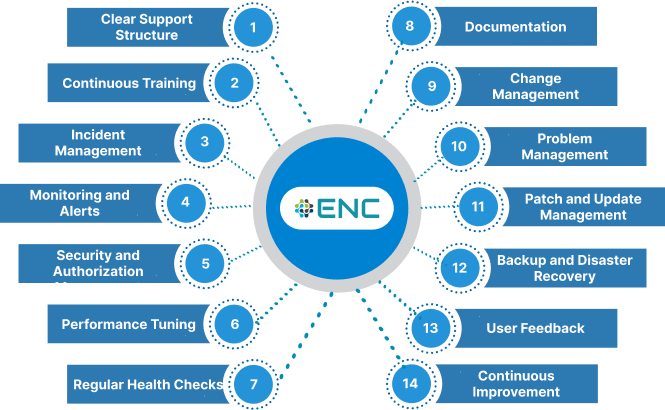
Our AMS services are based on best practices which involve a set of guidelines and strategies to ensure effective and efficient support for SAP systems. These practices help our clients maintain the stability, performance, and functionality of their SAP environments while minimizing disruptions.
Here are some key SAP support best practices:
- Clear Support Structure
- Continuous Training
- Incident Management
- Monitoring and Alerts
- Security and Authorization Management
- Performance Tuning
- Regular Health Checks
- Documentation
- Change Management
- Problem Management
- Patch and Update Management
- Backup and Disaster Recovery
- User Feedback
- Continuous Improvement
